- Home
- W. Somerset Maugham
The Making of a Saint
The Making of a Saint Read online
Produced by Chuck Greif and the Online DistributedProofreading Team at https://www.pgdp.net (This book wasproduced from scanned images of public domain materialfrom the Google Print project.)
NOVELS AT SIX SHILLINGS EACH.
_Uniform with this Volume._
=Tales of Unrest.= By JOSEPH CONRAD.
=The White-headed Boy.= By GEORGE BARTRAM.
=The Mutineer.= By LOUIS BECKE and WALTER JEFFERY.
=The Silver Christ=, and other Stories. By OUIDA.
=Evelyn Innes.= By GEORGE MOORE.
=The School for Saints.= By JOHN OLIVER HOBBES.
=Outlaws of the Marches.= By LORD ERNEST HAMILTON.
=Hugh Wynne.= By DR WEIR MITCHELL.
=The Tormentor.= By BENJAMIN SWIFT.
=The People of Clopton.= By GEORGE BARTRAM.
=Pacific Tales.= By LOUIS BECKE.
=Prisoners of Conscience.= By AMELIA E. BARR.
=The Grey Man.= By S. R. CROCKETT.
=An Outcast of the Islands.= By JOSEPH CONRAD.
=Almayer's Folly.= By JOSEPH CONRAD.
=The First Fleet Family.= By LOUIS BECKE and W. JEFFERY.
=The Ebbing of the Tide.= By LOUIS BECKE.
=Tales of John Oliver Hobbes.=
=The Stickit Minister.= By S. R. CROCKETT.
=The Raiders.= By S. R. CROCKETT.
=Nancy Noon.= By BENJAMIN SWIFT.
=The Lilac Sunbonnet.= By S. R. CROCKETT.
=A Daughter of the Fen.= By J. T. BEALBY.
=The Herb Moon.= By JOHN OLIVER HOBBES.
=Mrs Keith's Crime.= By MRS W. K. CLIFFORD.
LONDON: T. FISHER UNWIN.
THE MAKING OF A SAINT
By the same Author
LIZA OF LAMBETH
_Second Edition. Cloth, 3s. 6d._
'There has not been so powerful a story of the lowest class as "Liza ofLambeth" ... since Mr Rudyard Kipling wrote the "History of BadaliaHerodsfoot." We are not sure, indeed, that this new story does not beatthat one in vividness and knowledge of the class it depicts ... he hasan almost extraordinary gift of directness and concentration, and hischaracters have an astounding amount of vitality.'--_Standard._
'Those who wish to read of life as it is, without exaggeration andwithout modification, will have no difficulty in recognising the meritsof this volume.'--_Athenaeum._
'He has performed his task with singular ability. No one can read hisbook without being convinced and saddened by its evident truth andaccuracy.'--_Literary World._
'The characters are depicted with great vigour, and stand out before usas lifelike as if we were actually standing in the street listening totheir talk.'--Review of Reviews.
'Liza's portrait is so complete and so strong that even now her ghostrefuses to be laid.'--_Literature._
'Liza is a living creature from the beginning to the end.'--_Queen._
THE MAKING OF ASAINT
BY
WILLIAM SOMERSET MAUGHAM
LONDON
T. FISHER UNWIN
PATERNOSTER SQUARE
1898
[_All Rights reserved_]
Quanto e bella giovinezza, Che si fugge tuttavia; Chi vuol esser lieto, sia, Di doman non c'e certezza.
_Youth--how beautiful is youth!_ _But, alas, elusive ever!_ _Let him be light of heart who would be so,_ _For there's no surety in the morrow._
The Making of a Saint
INTRODUCTION
These are the memoirs of the Beato Giuliano, brother of the Order of StFrancis of Assisi, known in his worldly life as Filippo Brandolini; ofwhich family I, Giulo Brandolini, am the last descendant. On the deathof Fra Giuliano the manuscript was given to his nephew Leonello, on whomthe estates devolved; and has since been handed down from father to son,as the relic of a member of the family whose piety and good works stillshed lustre on the name of Brandolini.
It is perhaps necessary to explain how the resolution to give thesememoirs to the world has eventually been arrived at. For my part, Ishould have allowed them to remain among the other papers of the family;but my wife wished otherwise. When she deserted her home in the NewWorld to become the Countess Brandolini, she was very naturallyinterested at finding among my ancestors a man who had distinguishedhimself in good works, so as to be granted by the Pope the title ofBeatus, which was acquired for him by the influence of his great-nephewnot very long after his death; and, indeed, had our house retained theprosperity which it enjoyed during the fifteenth and sixteenthcenturies, he would undoubtedly have been canonised, for it was a wellcertified fact that the necessary miracles had been performed by hisremains and that prayers had been regularly offered at his tomb, but ourestates had dwindled, so that we could not afford the necessaryexpenditure; and now, when my wife has restored its ancient magnificenceto our house, times, alas! have changed. The good old customs of ourfathers have fallen into disuse, and it is impossible to create a saintfor ready money. However, my wife desired to publish an account of herpious ancestor. But a difficulty arose in the fact that there were nomaterials whatever for any relation of the life which Fra Giuliano ledwhen he had entered the Franciscan monastery of Campomassa, and it wasobvious that, even if there had been good works, prayer and fastingcould not have afforded a very interesting story; and so we have beenconstrained to leave untold his pieties and recount instead his sins,for which there was every facility in the memoirs he had himself leftbehind him.
Not content with writing the story of his own life, Fra Giuliano beginswith a mythical Consul of the Roman Republic, who is supposed to havefounded the family by a somewhat discreditable union with somebodyelse's wife. He then carries the story through countless ages till hearrives at his own conception, and the prodigies attending his birth,which he describes with great minuteness. He gives very amply thehistory of his childhood and boyhood, the period he spent as page atthe Court of the Bentivogli of Bologna, and his adventures in theNeapolitan armies under the Duke of Calabria; but the whole story isnarrated at such length, with so many digressions and details, and issometimes so vague, incoherent and disjointed that, with whateverediting, it was considered impossible to make a clear and continuousnarrative.
Fra Giuliano himself divided his life into two parts: the one he namedthe Time of Honey, being the period of expectation; the other the Timeof Gall, being that of realisation. The second half commences with hisarrival at the town of Forli, in the year 1488, and it is this partwhich we have decided to publish; for, notwithstanding its brevity, thiswas the most eventful period of his life, and the account of it seems tohang together in a sufficiently lucid fashion, centring round theconspiracy which resulted in the assassination of Girolamo Riario, andfinishing with the author's admission to the Order of St Francis. This,then, I have given exactly as he wrote it, neither adding norsuppressing a word. I do not deny that it would have pleased me a littleto falsify the history, for the Anglo-Saxons are a race of idealists, asis shown in all their dealing, international and commercial; and truththey have always found a little ugly. I have a friend who lately wrote astory of the London poor, and his critics were properly disgustedbecause his characters dropped their aitches and often used badlanguage, and did not behave as elegantly as might be expected from theexample they were continually receiving from their betters; while someof his readers were shocked to find that people existed in this worldwho did not possess the delicacy and refinement which they feltpalpitating in their own bosoms. The author forgot that Truth is a nakedlady, and that nudity is always shameful, unless it points a moral. IfTruth has taken up her abode at the bottom of a well, it is clearlybecause she is conscious that she is no fit companion for decent people.
I am painfully aware that the persons of this drama we
re not actuated bythe moral sentiments, which they might have acquired by education at areally good English public school, but one may find excuse for them inthe recollection that their deeds took place four hundred years ago, andthat they were not wretched paupers, but persons of the very highestrank. If they sinned, they sinned elegantly, and much may be forgiven topeople whose pedigree is above suspicion. And the writer, as ifunwilling to wound the susceptibilities of his readers, has taken careto hurl contempt at the only character whose family was distinctly notrespectable.
Before making my bow, and leaving the reader with Filippo Brandolini, Iwill describe his appearance, shown in a portrait painted in the sameyear, 1488, and till the beginning of this century in the possession ofmy family, when it was sold, with many other works of art, to travellersin Italy. My wife has succeeded in buying back the portraits of severalof my ancestors, but this particular one is in the collection of anEnglish nobleman, who has refused to part with it, though kindlyallowing a copy to be made, which now hangs in the place formerlyoccupied by the original.
It represents a middle-sized man, slim and graceful, with a small blackbeard and moustache; an oval face, olive coloured, and from his finedark eyes he is looking straight out into the world with an expressionof complete happiness. It was painted soon after his marriage. He isdressed in the costume of the period, and holds a roll of parchment inhis hand. At the top right hand corner are the date and the arms of thefamily; or a griffin rampant. Gules. Crest: a demiswan issuing from acoronet. The motto: _Felicitas_.

 The Skeptical Romancer: Selected Travel Writing
The Skeptical Romancer: Selected Travel Writing The Summing Up
The Summing Up Up at the Villa
Up at the Villa The Razor's Edge
The Razor's Edge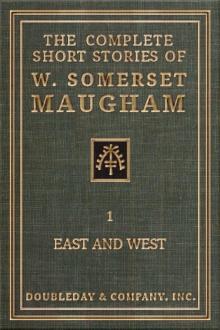 The Complete Short Stories of W. Somerset Maugham: East and West (Vol. 1 of 2))
The Complete Short Stories of W. Somerset Maugham: East and West (Vol. 1 of 2))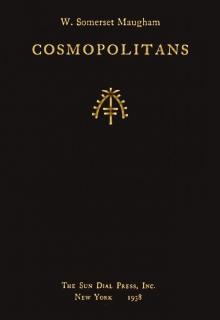 Cosmopolitans
Cosmopolitans 65 Short Stories
65 Short Stories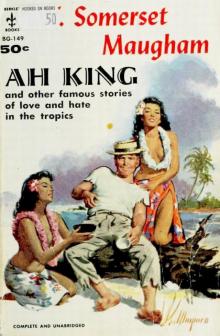 Ah King (Works of W. Somerset Maugham)
Ah King (Works of W. Somerset Maugham) Collected Short Stories: Volume 1
Collected Short Stories: Volume 1 Collected Short Stories Volume 2
Collected Short Stories Volume 2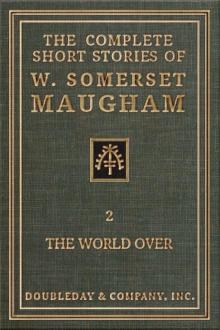 The Complete Short Stories of W. Somerset Maugham - II - The World Over
The Complete Short Stories of W. Somerset Maugham - II - The World Over Collected Short Stories Volume 4
Collected Short Stories Volume 4 Theatre
Theatre Short Stories
Short Stories Then and Now
Then and Now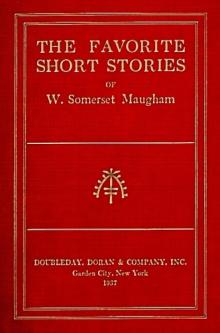 The Favorite Short Stories of W. Somerset Maugham
The Favorite Short Stories of W. Somerset Maugham Of Human Bondage
Of Human Bondage The Magician
The Magician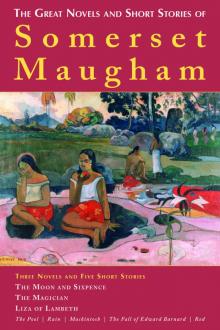 The Great Exotic Novels and Short Stories of Somerset Maugham
The Great Exotic Novels and Short Stories of Somerset Maugham A Writer's Notebook
A Writer's Notebook Christmas Holiday
Christmas Holiday The Making of a Saint
The Making of a Saint Merry Go Round
Merry Go Round The Narrow Corner
The Narrow Corner Collected Short Stories Volume 3
Collected Short Stories Volume 3 Ten Novels and Their Authors
Ten Novels and Their Authors Ashenden
Ashenden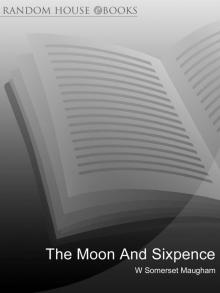 The Moon and Sixpence
The Moon and Sixpence Cakes and Ale
Cakes and Ale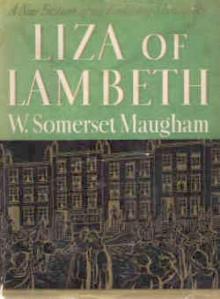 Liza of Lambeth
Liza of Lambeth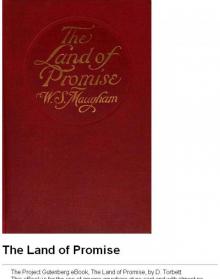 The Land of Promise: A Comedy in Four Acts (1922)
The Land of Promise: A Comedy in Four Acts (1922) A Writer's Notebook (Vintage International)
A Writer's Notebook (Vintage International)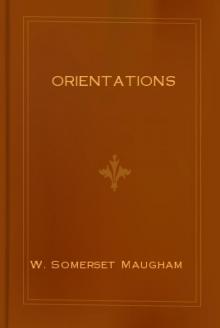 Orientations
Orientations Selected Masterpieces
Selected Masterpieces Mrs Craddock
Mrs Craddock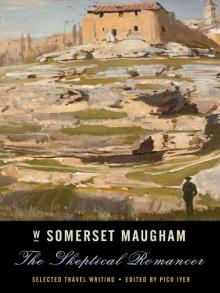 The Skeptical Romancer
The Skeptical Romancer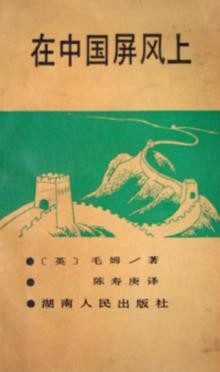 On a Chinese Screen
On a Chinese Screen (1941) Up at the Villa
(1941) Up at the Villa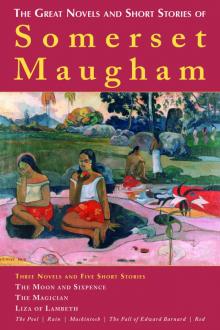 The Great Novels and Short Stories of Somerset Maugham
The Great Novels and Short Stories of Somerset Maugham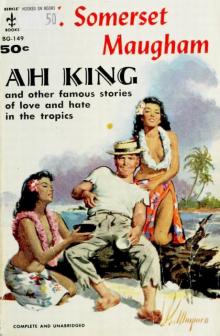 Ah King
Ah King The Explorer
The Explorer The Skeptical Romancer: Selected Travel Writing (Vintage Departures)
The Skeptical Romancer: Selected Travel Writing (Vintage Departures) The Complete Short Stories of W. Somerset Maugham - I - East and West
The Complete Short Stories of W. Somerset Maugham - I - East and West